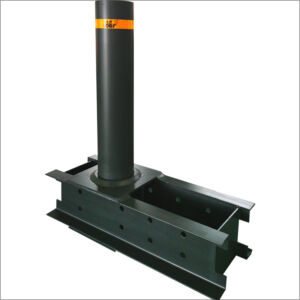Whether you need to enhance the security of a building or improve the security of a specific site or workplace, you need vehicle barriers to help you achieve your goals. We’ll cover the different types of vehicle barriers and what they can do for you.
What is a vehicle barrier?
A vehicle barrier is any device that causes a car to slow down, usually with a purpose but not always. They are most commonly used in high-traffic areas, especially when children and the elderly make up a large portion of pedestrian traffic, such as school zones. However, you can find them in many places, including highways, parking lots, railroad crossings, commercial areas, private communities and construction sites.
The most common obstacles to driving
The most common obstacle used for driving is the speed bump. A speed bump is a device that can be placed in a specific area of a school district, parking lot or private property. It will create a 6-inch barrier that forces a car to slow down. While common, these barriers do not provide the stopping power needed for more important safety concerns. That’s why ZASP has created several different options to accommodate a wide range of features.
How Collision Barriers Work
Crash barriers work by first attracting the driver’s attention and then forcing them to slow down before reaching the barrier to avoid damaging the vehicle.
Drivers can’t miss crash barriers because they are often brightly colored and use reflective materials to make themselves as noticeable as possible. They are also sometimes marked with signs to ensure that drivers know they need to slow down.
If a vehicle comes into contact with a vehicle at a specific speed, the manufacturer will create a crash barrier to damage the vehicle. For this reason, you will find crash barriers made of metal or placed so that the vehicle needs to drive over it.
What happens when you hit a barrier
If you hit a crash barrier, your vehicle may be damaged. The stronger the crash barrier, the more damage you will suffer. Speed bumps and speed bumps can damage tires and your car’s shock absorption system. Larger crash barriers can cause complete damage to your vehicle and even cause injury to you and others in your vehicle.
What types of vehicle guards are available
There are a large number of different vehicle guards on the market, divided into the following three categories: active vehicle guards, passive vehicle guards, and hybrid vehicle guards. How do you know which one is best for your situation? First, you need to understand the different types and their most common uses.
1 Active
Active vehicle barriers open and close. Some examples include
Bollards
Bollards are tall cylinders that emerge from the ground when necessary. They can be used as collision prevention and traffic control. You may find bollards or permanent (inactive) bollards in the middle of a highway used to facilitate traffic stops.
Mobile
Mobile barriers are mounted on the back of a truck and can be moved to where they are needed. When the desired destination is reached, the mobile barrier will open and help control traffic in the area. These barriers are often useful on construction sites where only a temporary solution is needed.
2 Passive
Unlike active vehicle barriers, passive vehicle barriers do not operate automatically or manually. Instead, they are permanent. They are primarily used for security on premises, not traffic control, because they do not have controls to put them away when not needed. For example, a passive barrier could be placed in front of a storefront to prevent cars from hitting it.
3 Hybrid
Hybrid car barriers are semi-permanent barriers with qualities that apply to both active and permanent car barriers. These can come in handy when you need a different solution for medium length projects that may have different needs.
If you are looking for barricade solutions to maintain the safety of schools and sidewalks, contact us. ZASP offers a number of different options including fixed bollards, mobile bollards, hydraulic barricades, and wedge barriers.


